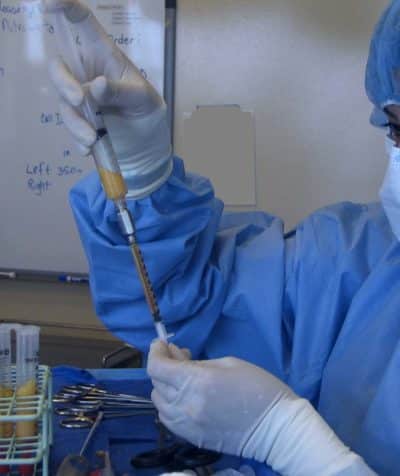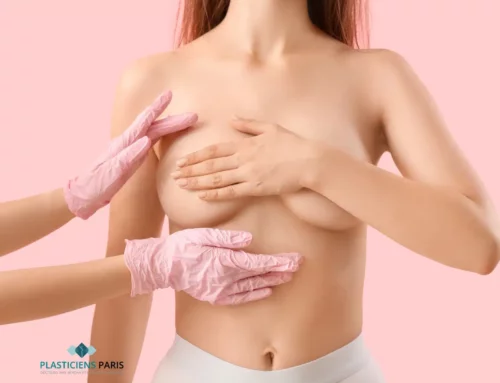
The French Society of Plastic Surgery(SoFCPRE), to which we belong, has issued new recommendations concerning breast augmentation by fat injection(breast lipofilling) into the breasts for aesthetic purposes or breast reconstruction.
One of the main limitations of this natural breast augmentation by fat injection is that the scars caused by the injected fat may give rise to radiological images that would interfere with breast cancer surveillance. The other uncertainty is the possible risk of an increase in breast cancer. To date, there have been no scientific studies suggesting a significant increase in the risk of breast cancer in women with no previous history of breast fat injections. On the other hand, it is true that we have no long-term studies to prove that there is no increase in this risk, particularly given that breast cancer affects one in 10 women in the general population.
Consult our article on the price of breast augmentation by lipofilling
For aesthetic purposes
La technique du lipofilling, qui permet d’augmenter le volume de la poitrine naturellement, est donc proposée par la société française de chirurgie plastique chez des femmes sans antécédents personnels ou familiaux de cancer du sein, après bilan radiologique mammaire négatif. Pour notre part, nous demandons avant une telle intervention, une mammographie, une échographie et une imagerie par résonance magnétique, chez un radiologue spécialisé. Le même bilan est répété un an après l’intervention chez le même radiologue. Par la suite, nous ne recommandons pas de répéter ces examens avant le dépistage du cancer du sein à l’âge de 50 ans.
Breast reconstruction
La société valide cette technique après ablation totale du sein. En effet, le risque de rechute locale est jugé extrêmement faible. Dans ce cadre, une reconstruction mammaire par lipofilling est considérée comme une chirurgie réparatrice et peut bénéficier d’une prise en charge par l’Assurance Maladie (voir notre page dédiée au remboursement du lipofilling mammaire)
The situation is much more complex when it comes to treating the aesthetic after-effects of conservative treatments. These are women whose breast cancer has been treated by lumpectomy (partial removal of the breast around the tumor) followed by radiotherapy, and who present aesthetic after-effects in the form of notches. In these cases, the risk of local recurrence (relapse of the cancer in the breast) is high (around 5% chance of recurrence at 5 years in women over 50). Fat injection can address this problem, but it directly opposes the desired effect of radiation, which aims to "atrophy" tissue so that the cancer cannot return. What's more, some studies have found a higher rate of local recurrence in injected women. In these cases, the SoFCPRE recommends a minimum delay of 3 years between the cancer and the fat injection. Once again, we have some reservations, and will adapt this recommendation to the patient's age at the onset of her breast cancer. Women under 40 have a much higher rate of local recurrence. We will maintain a minimum delay of 5 years between the ages of 40 and 50, and 10 years before the age of 40.
Par ailleurs, les membres de la SoFCPRE s’engagent à déclarer via internet et de façon anonyme tous les cas d’injection de graisse dans les seins afin d’établir une base de données nationale et de pouvoir publier les résultats à long terme de cette technique.
Nous pensons que ces recommandations, même si elles appellent quelques critiques, ont le mérite de mettre en valeur le fait que les chirurgiens plasticiens évaluent leurs pratiques et privilégient avant tout la sécurité pour leurs patientes.
Nous avons choisi de pratiquer les injections de graisse à visée esthétique, car il s’agit pour nous d’une technique fiable et donnant un résultat naturel sans les inconvénients d’un implant silicone. Cependant, nous informons les patientes des limites et incertitudes liées à ce procédé. De plus, nous avons mis en place des réseaux de soins avec des radiologues experts afin de pouvoir suivre nos patientes sur le long terme.
More info :




